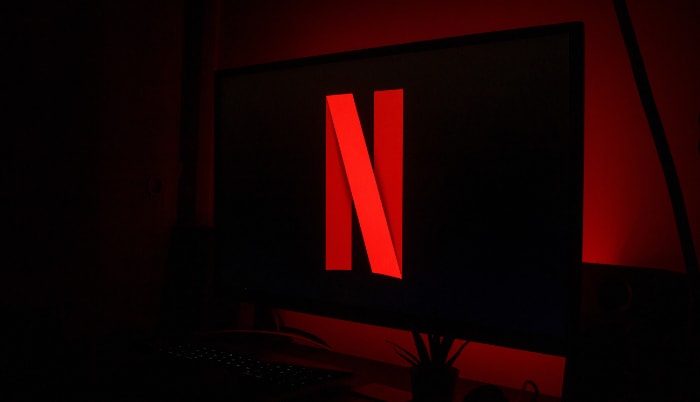Is Netflix Dying? The Rise and Fall of Netflix

In the world of entertainment, few brands have made as big an impact as Netflix. Since its inception in 1997 as a DVD rental service, Netflix has evolved into a global streaming powerhouse, with millions of subscribers enjoying its vast library of content.
However, in recent years, the landscape of streaming services has become increasingly competitive, with new players entering the market and vying for viewers’ attention.
This blog aims to explore whether Netflix is losing its once-dominant market position and if it’s on the verge of decline or simply adapting to the ever-changing landscape of the streaming industry.
Join us as we delve into the factors contributing to Netflix’s current challenges, its strategies to stay relevant, and the future prospects for this streaming giant.
The Evolution of Streaming Services
The evolution of streaming services has transformed the way we consume entertainment, shaping our viewing habits and preferences.
In this section, we will explore the history of streaming services, from their humble beginnings to the highly competitive market we see today, and how these changes have impacted Netflix’s position in the industry.
A Brief History of Streaming Services
In the early 2000s, streaming services emerged as a groundbreaking technology that allowed users to access content on-demand. Pioneers like YouTube and Vimeo laid the groundwork for this new mode of content consumption.
Netflix’s Entry
Initially a DVD rental service, Netflix recognized the potential of streaming and entered the market in 2007, becoming one of the first subscription-based platforms.
Market Expansion
Over the years, the popularity of streaming services grew exponentially, leading to an ever-increasing number of platforms and a shift in consumers’ viewing habits.
The Rise of New Competitors and Their Impact on Netflix
The success of Netflix paved the way for other major players to enter the market, such as Amazon Prime Video, Hulu, and more recently, Disney+, Apple TV+, and HBO Max.
Exclusive Content
To differentiate themselves and attract subscribers, these new platforms invested in creating exclusive content and securing exclusive streaming rights for popular shows and movies.
Fragmentation of the Market
As a result, the streaming landscape became more fragmented, with each platform offering its unique mix of content, leading to increased competition for Netflix and a potential decline in its market share.
Factors Contributing to Netflix’s Decline
As the streaming industry evolves and competition grows, Netflix faces several challenges that have contributed to its decline.
In this section, we will examine the main factors affecting Netflix’s current position, shedding light on the obstacles it must overcome to maintain its status as a leading streaming platform.
Loss of Popular Licensed Content
In recent years, Netflix has seen the departure of some of its most popular licensed shows and movies, such as “Friends,” “The Office,” “How I Met Your Mother,” “Grey’s Anatomy,” and various Disney titles, as the rights holders have chosen to stream their content on their own platforms or sell the rights to competitors.
Subscriber Impact
The loss of these fan-favorite titles has led to some subscribers questioning the value of their Netflix subscription and possibly seeking alternatives that offer the content they desire.
Increased Competition
Netflix now faces significant competition from a growing number of streaming platforms, including Disney+, HBO Max, Apple TV+, Amazon Prime Video, and many others, each vying for a share of the market.
Unique Offerings and Strategies
Competitors have developed their strategies to attract and retain subscribers, such as exclusive content, competitive pricing, and bundling with other services, further increasing the pressure on Netflix to maintain its position in the market.
Slower International Growth
Although Netflix has experienced rapid growth in international markets, this growth has started to slow down due to factors such as market saturation, local competition, and differing content preferences among audiences.
Local Competition and Content Preferences
In many regions, local streaming services offer content that is better suited to the tastes of the audience, making it challenging for Netflix to achieve the same level of dominance it enjoys in the United States.
Original Content Saturation
Netflix has focused on producing a vast amount of original content in an attempt to keep subscribers engaged. However, this has led to concerns about the overall quality of the content, with some critics and viewers arguing that the platform is sacrificing quality for the sake of quantity.
Competitor Comparison
In contrast, some competitors have adopted a more targeted approach to creating original content, focusing on producing high-quality, critically acclaimed shows and movies that attract a dedicated following and generate positive word-of-mouth, which could put Netflix at a disadvantage.
Netflix’s Strategies to Stay Relevant

In the face of increasing competition and a rapidly changing industry, Netflix has implemented a variety of strategies to maintain its relevance and continue attracting subscribers.
In this section, we will discuss the key approaches Netflix has employed to adapt and thrive.
Investment in Original Content
Netflix has been investing heavily in original content, both by producing high-budget TV shows and movies and by acquiring exclusive rights to popular and critically acclaimed films. This strategy aims to provide subscribers with a unique and diverse content library that sets Netflix apart from its competitors.
Diversity in Content
Netflix has also focused on creating content that caters to a wide range of tastes, genres, languages, and regions, making the platform more appealing to a global audience and showcasing its commitment to inclusivity and representation.
Partnerships and Collaborations
To strengthen its content library, Netflix has entered into strategic partnerships with major studios and production companies, such as Sony Pictures, which provides the platform with exclusive access to certain titles and helps secure additional high-quality content.
Benefits of Collaborations
These partnerships not only benefit Netflix by expanding its content offerings but also provide the collaborating studios with increased exposure and revenue-sharing opportunities, making it a win-win situation for both parties.
Personalization and Technological Advancements
Netflix continues to invest in the development of its recommendation algorithm to provide a more personalized and engaging user experience. By offering tailored content suggestions, Netflix aims to increase viewer satisfaction and retention rates.
Exploration of New Formats
Netflix is also exploring innovative content formats, such as interactive storytelling (e.g., “Black Mirror: Bandersnatch“) and virtual reality experiences, to stay ahead of the curve and offer subscribers unique experiences that set the platform apart from its competitors.
The Future of Netflix
As we consider the challenges and strategies discussed earlier, it’s essential to examine Netflix’s prospects for long-term success.
In this section, we will delve into the potential for Netflix to maintain its position as a leading streaming service and the challenges it must address to sustain its relevance in an increasingly competitive market.
Potential for Long-Term Success
Netflix has demonstrated its ability to adapt to changing market conditions and innovate in response to competition. By continuing to invest in new technologies, formats, and content strategies, Netflix can maintain its position as a leading streaming platform.
Continuation of Strategic Partnerships
By forming and maintaining strategic partnerships with studios, production companies, and content creators, Netflix can secure access to exclusive content and further differentiate its offerings from those of its competitors.
Challenges that Remain
As the streaming market becomes increasingly saturated, Netflix will need to continually find ways to retain its existing subscriber base and attract new users. This will require a consistent focus on delivering high-quality, engaging, and diverse content that caters to the evolving preferences of its audience.
Maintaining a Strong Content Library
With the loss of popular licensed content and the rise of competing platforms, Netflix must continue to invest in its original content production and acquisition strategies to ensure its library remains attractive and relevant to subscribers.
Balancing quantity and quality will be crucial to maintaining the platform’s appeal in an increasingly competitive landscape.
Conclusion
As we have explored the factors contributing to Netflix’s current challenges, its strategies to stay relevant, and the future prospects for the streaming giant, it becomes evident that the platform is facing significant competition and an evolving market.
However, Netflix has demonstrated its ability to adapt and innovate in the face of these challenges, investing in original content, forming strategic partnerships, and exploring new formats and technologies.
While it is true that Netflix may no longer enjoy the same dominance it once held in the streaming industry, it would be premature to declare the platform as dying.
Instead, Netflix is adapting to the ever-changing landscape and finding ways to maintain its position as a leading streaming service.
By continuing to focus on delivering high-quality, diverse content and embracing new technologies and partnerships, Netflix has the potential to remain a significant player in the world of entertainment for years to come.


